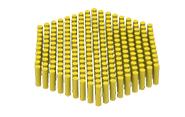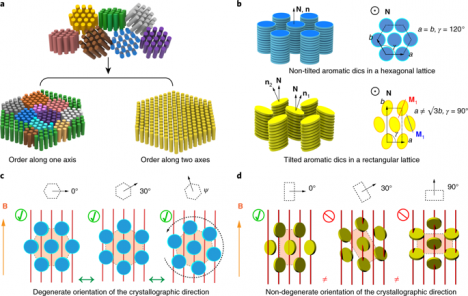Controlling Textures in Single Crystal Soft Materials

A new study that features the work of Yale researchers demonstrates a method to create single crystal texture in a self-assembled soft material.
 The work features an innovative means of controlling texture - that is, the orientation of the crystal lattice on which the molecules are packed - in soft materials, which has been particularly challenging for materials scientists.
The work features an innovative means of controlling texture - that is, the orientation of the crystal lattice on which the molecules are packed - in soft materials, which has been particularly challenging for materials scientists.
The paper is published today in Nature Materials and includes co-authors Amir Haji-Akbari and Menachem Eliemelech, both professors of chemical & environmental engineering. Senior author is Chinedum Osuji (formerly of Yale), a professor of chemical and biomolecular engineering now at the University of Pennsylvania.
The single-crystal state of materials is of interest to researchers because the intrinsic properties of materials are best understood fundamentally in this state.
In many cases, the unique properties of many devices rely on the preparation of such materials as single crystals. For example, the entire microelectronics industry requires the ability to create wafers of single crystal silicon, which are then used for the fabrication of microelectronic chips. Likewise, modern aviation depends almost entirely on the single crystal turbine blades that enable modern jet engines.
These examples of silicon and metal alloys contrast sharply, however, with the landscape in soft matter. In those cases, making reasonably large quantities of single crystals has so far proved near-impossible. This paper demonstrates a way to do that.

